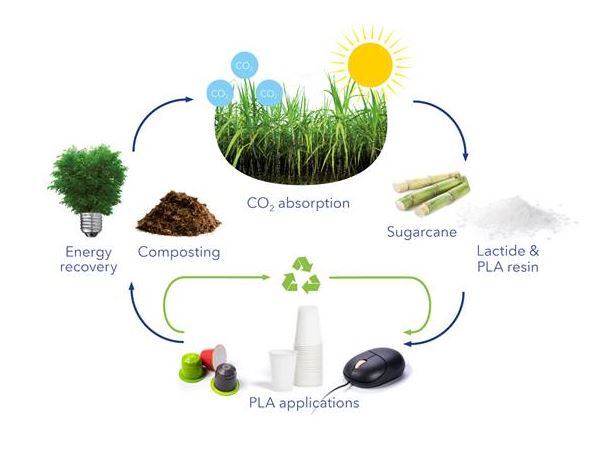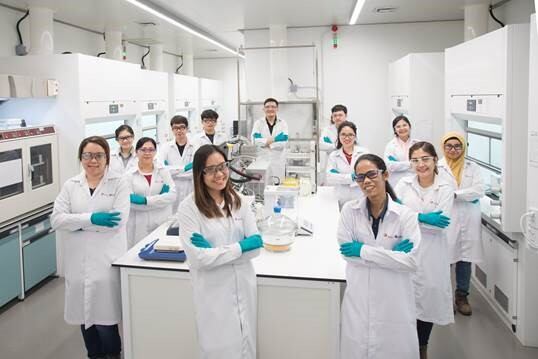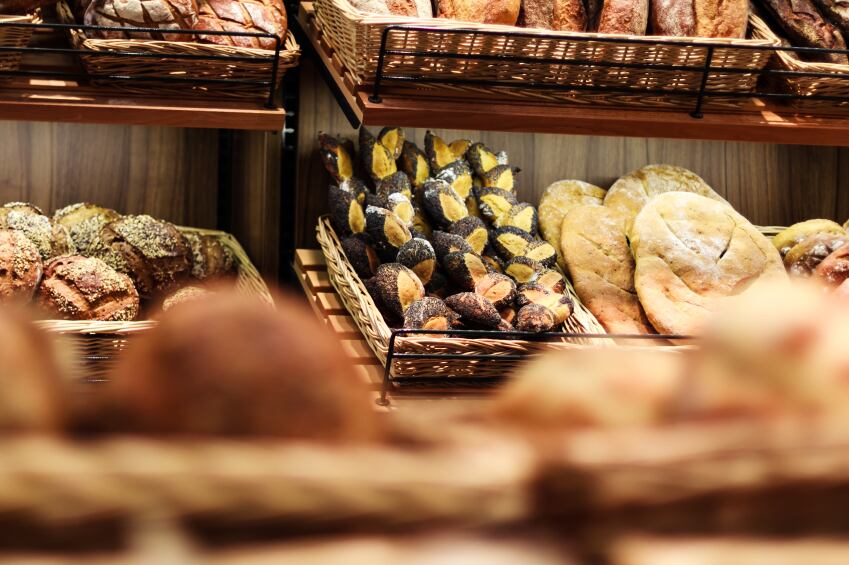PLA is a biopolymer where further reductions in the environmental footprint can be achieved through improvements in sugarcane farming, efficiency increases in the production steps and the usage of renewable energy in the conversion process.
Manufacturing process
The LCA study has an updated description of the different steps in Total Corbion PLA’s production chain for PLA and related environmental impacts, with transparency on the environmental impacts of biobased chemicals.
The main impacts of PLA production are related to agricultural feedstock production and the manufacturing process of PLA from sugar.
The sugarcane crop production has impacts on most of the environmental impact categories including Global Warming Potential (GWP), water, eutrophication, acidification and particulate matter and land use.
"From a cradle-to-gate perspective, the GWP of PLA is confirmed to be 500g CO2 /kg of PLA, which is approximately a 75% reduction in carbon footprint versus most traditional plastics," said François de Bie, senior marketing director, Total Corbion PLA.
"It is likely in 10 years from now the cradle-to-gate GWP for PLA will be reduced from plus 500g to minus 900g CO2/kg PLA."
When using biomass to produce PLA and biobased materials, typical concerns include deforestation and biodiversity.
A 2017 sustainability risk assessment for Corbion’s main sugar supplier did not identify significant land transformation to sugar plantations in high carbon stock or high conservation value protected areas.
Similarly, the water risk assessment results show low risk for the sourcing areas, where most of the water consumption takes place.
Renewable energy
There is significant potential to further reduce the environmental impacts of PLA production.
The most significant improvement measures are: (1) increase the sugarcane yield by improved agricultural practices; (2) reduce NOx and SOx emissions by optimized fertilizer application; (3) increase the electricity exported to the grid by increasing the energy efficiency of the sugar mill and by installing high pressure boilers; (4) increase the use of renewable energy in lactic acid, lactide and PLA production; and (5) reduce the use of chemicals in lactic acid production.
Combined, these measures have the potential to reduce the CO2 footprint from 501 to − 909 kg CO2eq/ton PLA, and further reduce the environmental footprint of PLA.
"The sugarcane plantations where we source biomass needed for the PLA production have very limited irrigation and are located in areas of low to medium water stress," added Ana Morão, principal scientist, Sustainability, Corbion.
On request of Corbion, GRAS carried out satellite imaging of the sugarcane plantation areas combined with mapping the high carbon stock and biodiversity protected areas. The study confirmed Corbion’s sourcing areas did not show significant land transformation.
The Life cycle assessment (LCA) is performed according to the ISO 14040/44 standard methodology.
The 16 environmental impact categories from ILCD 2011 Midpoint+ were considered for the hotspot analysis. As primary data actual industrial data were used for the sugar production, lactic acid production (Corbion) and PLA production (Total Corbion PLA), including various recently developed process insights.
Source: Springer
Date: November 2019
Title: Journal of Polymers and the Environment volume 27 issue 11
Author(s): Ana Morão, François de Bie
First Online: 22 August 2019



